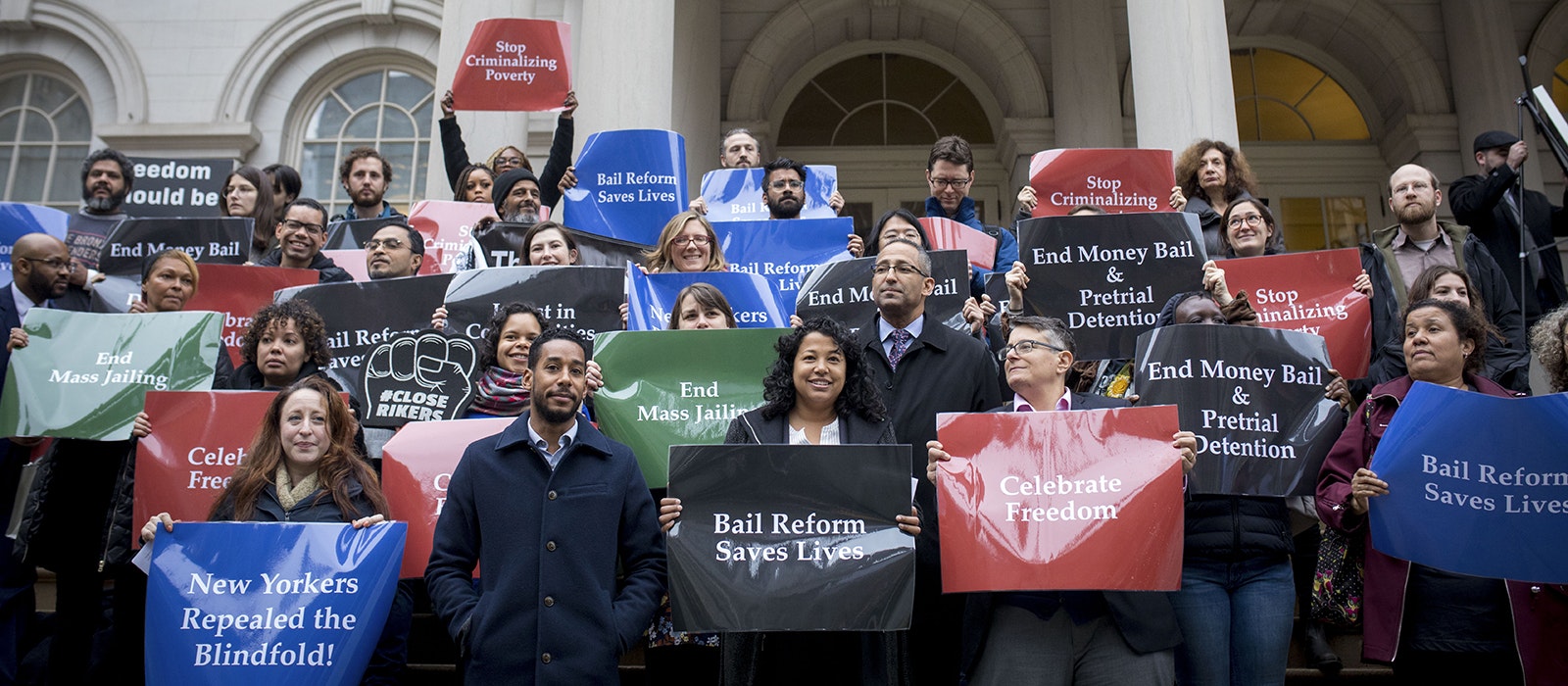Pretrial Release Rates Not Equal Across Communities
According to the data used in this analysis, in the years just before bail reform passed, the vast majority of people charged with crimes in New York were released to await trial at home.1 Statewide, 76% of individuals charged with crimes were released prior to the resolution of their cases.2 Of this group, 86% were released with no bail, and the remainder were released after paying the bail set in their case. However, pre-reform release rates varied significantly across communities, and the new law will provide critical reductions in incarceration for groups that have historically been jailed at higher rates:
People charged with nonviolent felonies
While pre-reform release rates varied by offense type, a majority or near-majority of people charged with all offense types were released to await their day in court at home. The highest release rate was for people charged with misdemeanors at 86%. Fifty-seven percent of people charged with nonviolent felonies, and 45% of those charged with violent felonies were released pending trial. The biggest impact of the law will be on those charged with nonviolent felonies, far fewer of whom will be exposed to the harms of incarceration.
People charged with crimes outside of New York City
Before bail reform was enacted, over two-thirds of people charged with crimes were released pending trial both in New York City and in the counties outside of the City. But the rate was significantly higher in New York City, where 82% of people awaited trial at home rather than in jail. That percentage was 68% outside of New York City. In other words, people charged with crimes outside of New York City were 17% less likely to be released pretrial.
Black New Yorkers across the state
The share of people who awaited trial at home before reform varied significantly by race, particularly outside of New York City. In the City, White people were 9% more likely to be released than Black people. Outside of New York City, White people were 20% more likely to be released than Black people. These disparities worsen as charges grow more serious. White people charged with misdemeanors and nonviolent felonies were 7% and 18% more likely, respectively, than Black people to be released pretrial in the counties outside of New York City.
While the new law should reduce these disparities, additional reforms are needed to ensure racial equity in release decisions. The reforms will not impact people charged with violent felonies, for which racial disparities are even more extreme than those for misdemeanors or nonviolent felonies––White people were 56% more likely than Black people to be released when the alleged charges were for violent felonies outside of New York City. They also do not address the fact that Black and Latinx people are more likely to be arrested and charged with crimes in the first place.

